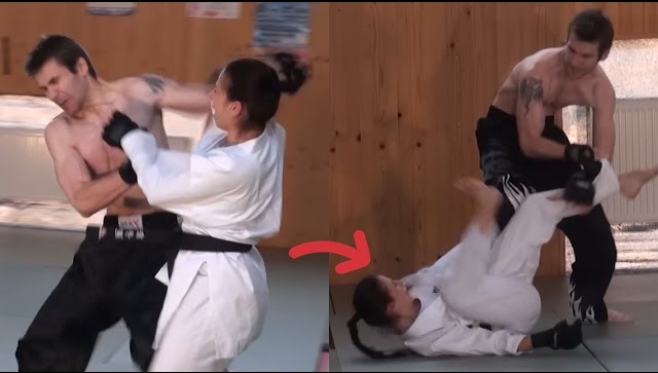An organized fight depicted in a recent video has sparked discussion within the martial arts community. The video showed a female karate black belt competing against an untrained man in a match. Contrary to expectations, the man without formal training emerged victorious, raising several important points for consideration.
What we can observe:
Importance of Gender and Physical Strength
The video highlights a critical aspect often overlooked in martial arts: the inherent physical strength differences between genders. It showcases how a male, even untrained and possibly smaller or skinnier, can possess a strength advantage over a female counterpart that could be overwhelming in a physical confrontation.
Not all Martial arts are created equal
The event brings to light a contentious issue within martial arts circles – the effectiveness of various martial arts disciplines. While karate is a respected and established martial art, its practicality in real combat scenarios, especially against untrained but physically stronger opponents, is questioned. This stands in contrast to other martial arts, such as Brazilian Jiu-Jitsu, where proponents argue that skill and technique can often overcome raw strength.
While the video may seem to downplay karate’s effectiveness, it is important to recognize the value of all martial arts forms. Each offers unique benefits, and applicability varies by context. The video underscores the importance of responsible training and sparring practices, especially in mixed-gender environments, with awareness of physical differences and potential risks involved in such matchups.
Overall, the video opens a dialog on important aspects of martial arts application in real-world scenarios. Martial arts provide immense benefits but are part of a broader spectrum of physical and psychological factors influencing combat sports. Understanding, respecting and adapting to these factors is crucial for all practitioners.

















